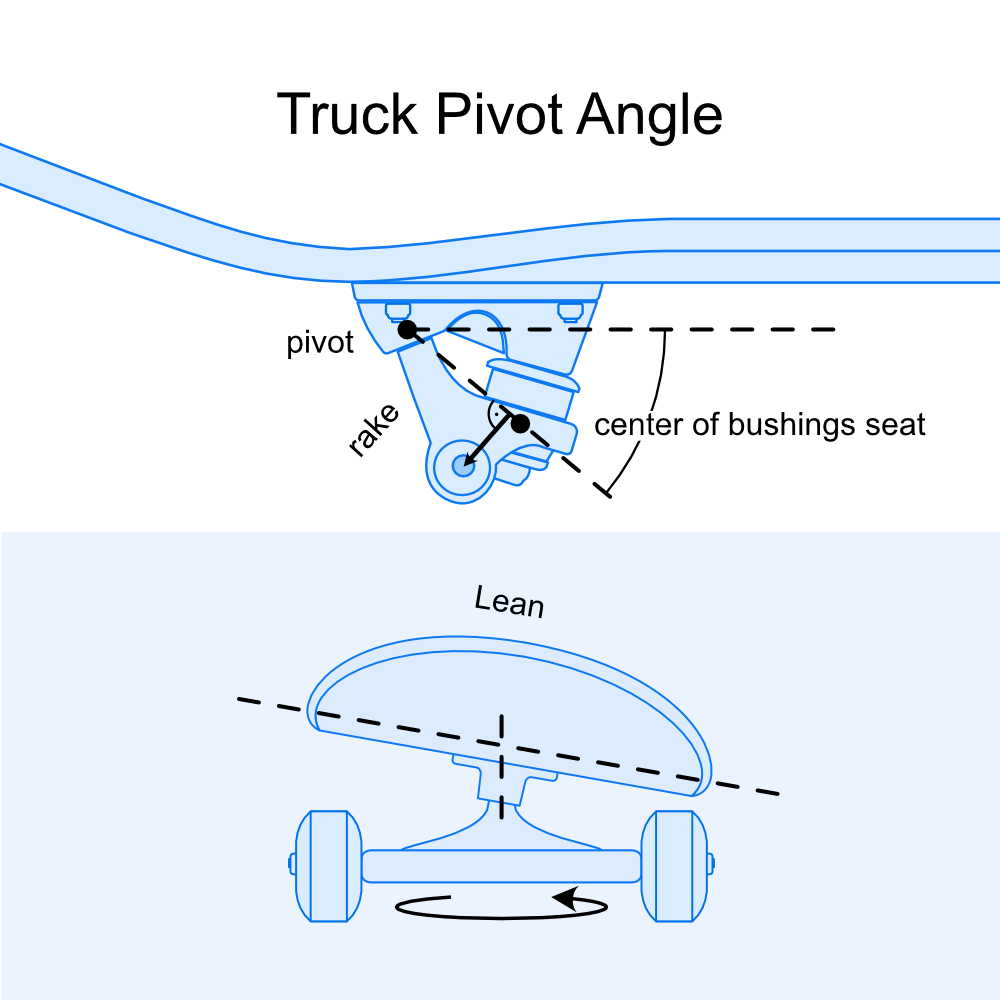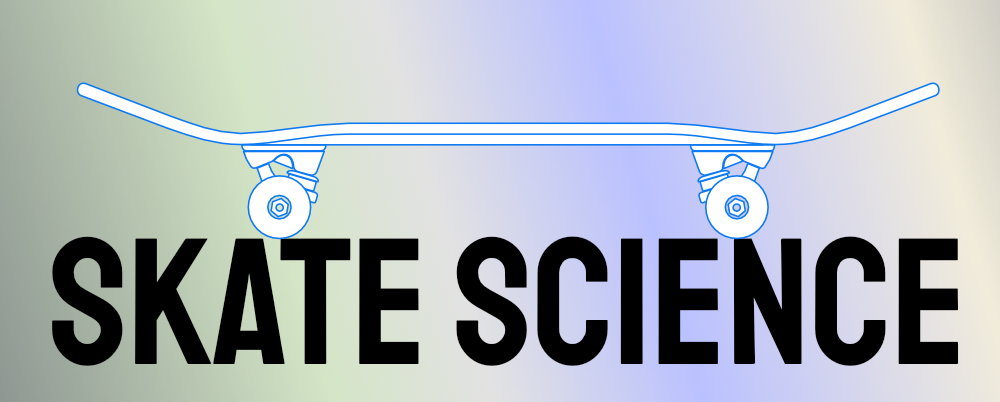
Yeah, cool that you’re here!
Table of content
Concave (… soon)
Styles and Shapes (… soon)
Wheels (… soon)
Expectation Management (… soon)
What is an INCH?
Ok let’s start with the basics. What is an Inch? Skateboard parts are often measured in Inch. This unit is widely used in the US, which is the birthplace of the skateboard. Here are a few examples to get used to it. When you’ve got this down you can make much more sense from all the numbers later on.
1 Inch = 2,54 cm
(1″)
For example deck sizes are defined by the width of the deck. The difference between an 8.0″ and 8.5″ deck is:
0.5″ = ca.1,3cm
(1/2 Inch)
For example deck wheelbases. The difference between a 14″ and a 14.25″ wheelbase is:
0.25″ = ca. 6 mm
(1/4 Inch)
The smallest steps used for skateboard sizes are 1/8 Inches. For example tye difference between an 8.0″ and an 8.125″ deck is:
0.125″ = ca. 3 mm
(1/8 Inch)
7/8 Inch you’ve probably seen on hardware packages.
7/8 Inch = 0.875″
(2,2cm)
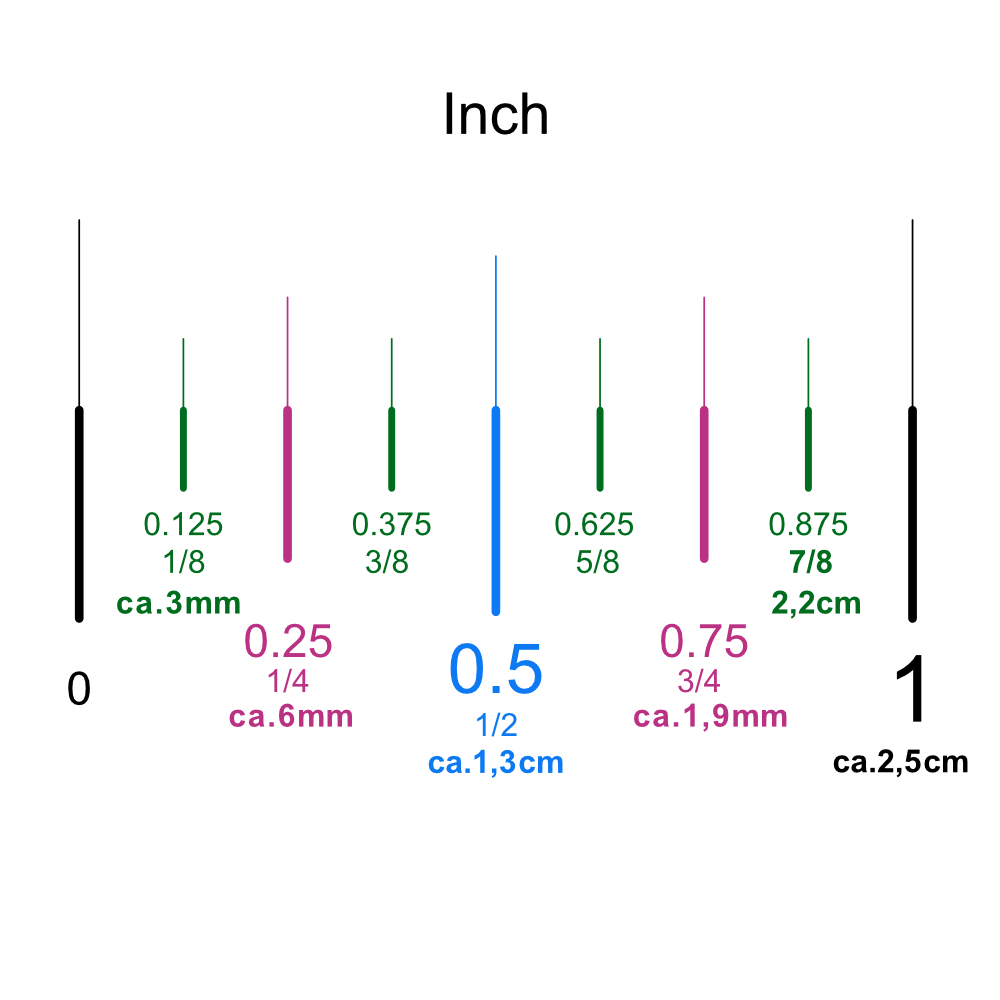
Wheelbase
The wheelbase plays an important role in how agile or stable a skateboard behaves. A shorter wheelbase makes the turning radius smaller and the board becomes more agile. A longer wheelbase makes the turning radius bigger and the board becomes more stable.
Deck Wheelbase
This is the distance between (the centers) of the inner drill holes. 14″ and below are short. 14.25″ is the standard. 14.5″ and above can be considered as long wheelbases.
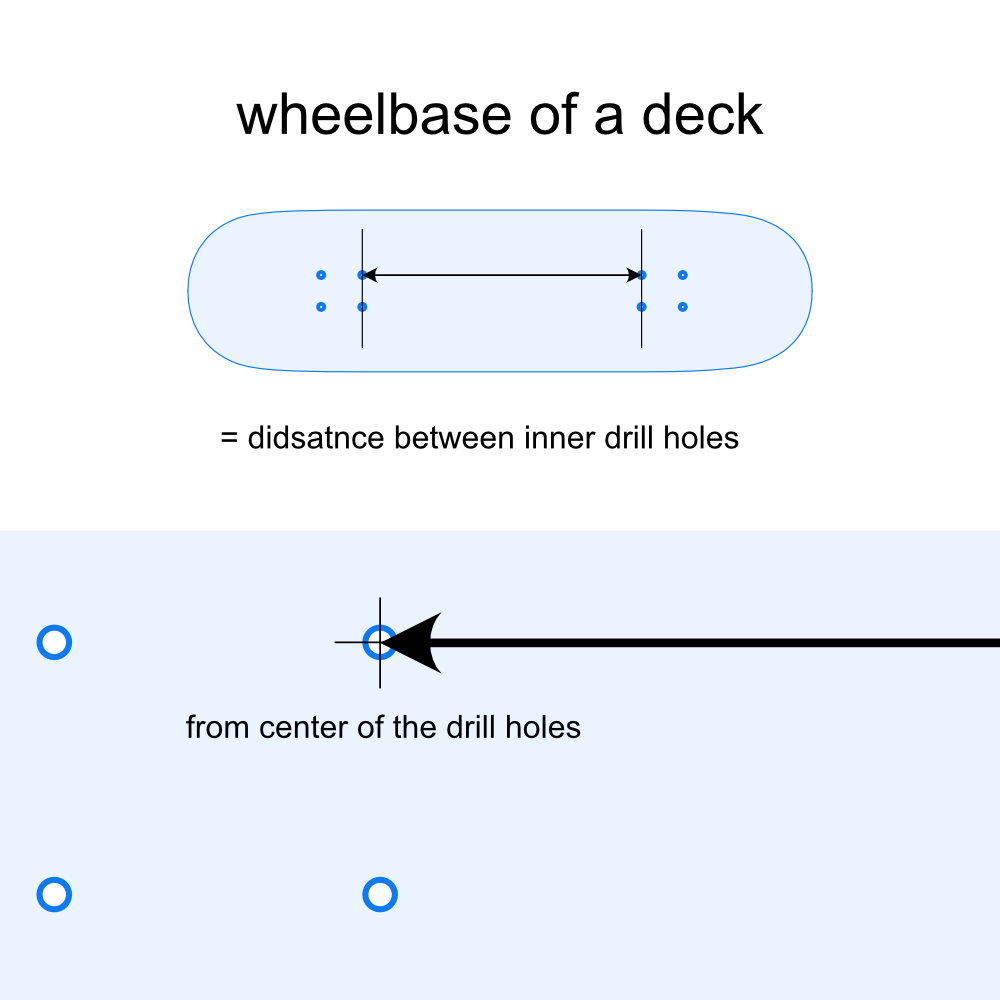
Truck offset
The actual wheelbase of a skateboard is the distance from axle-to-axle. The difference between the deck wheelbase and the actual wheelbase comes from the truck offset. This varies dramatically between the different truck brands (up to 1/2″) .
Truck Offsets change the
1. wheelbase of the board.
2. wheelie compfort. The offset changes the nose / tail length too, which give you more / less leverage for wheelies.
3. Pop Angle. See next topic.
Offset by manufacturer:
(numbers provided by Freedom Skateshop)
ACE
Classic (+2.76″)
AF1 Hollow (+2.76″)
AF1 Low (+2.83″)
AF1 Low Hollow (+2.83″)
AF1 (+2.95″)
Slappy
(measured by Professor Smitt)
ST1 etc. (+3.06″)
Independent
Forged Titanium (+2.91″)
Forged Hollow (+3.07″)
Standard (+3.15″)
Hollow (+3.15″)
Mid (+3.15″)
Tremendous Trucks
(official partner of INPEDDO)
Pro (+3.15″)
Premium (+3.15″)
Standard (+3.15″)
Basic (+3.15″)
Thunder
Titaniums (+3.08″)
Team Hollows (+3.15″)
Lights (+3.15″)
Hollow Lights (+3.23″)
Standard (+3.27″)
Venture
High (+3.23″)
Hi Lights (+3.35″)
Venture Forged (+3.5″)
These figures are additions to the deck wheelbase. For example a deck with 14.25″ wheelbase and trucks listed at (+3.15″) yields 17.4″ axle-to-axle.
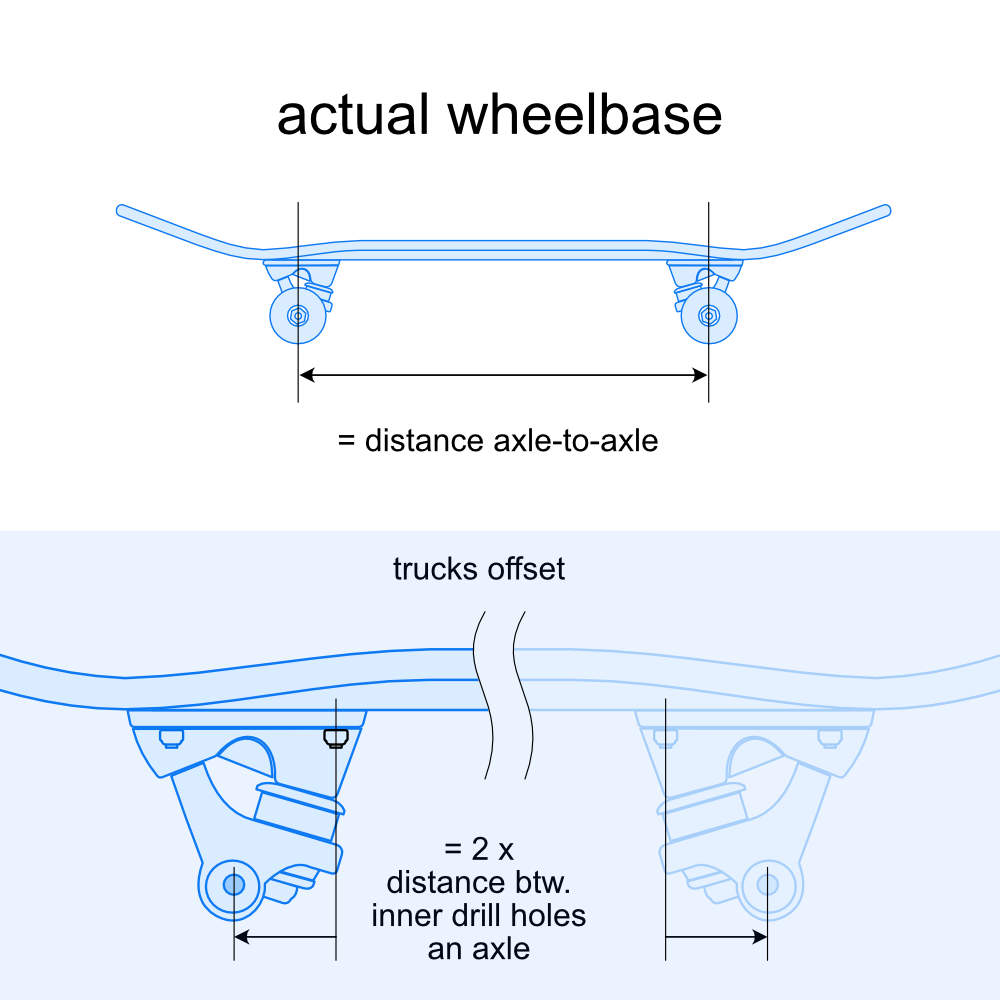
POP Angle (PA)
The PA is important for how the Ollie feels. It’s how steep your deck goes up when the tail hits the ground. Mostly you speak about the Tail-PA but there is also a Nose-PA which is important for the Nollie.
A small PA (34° and lower) makes your board easy to pop. This is more compfortable but on the other hand this makes your pop weak. With a relatively big PA (36° and higher) you need more power to hit the tail on the ground. But this makes your pop also stronger.
5 factors influence the PA:
1. kick-angles of the deck. The steeper the kick of nose or tail – the steeper also becomes the PA. Some decks have a steeper nose, but most are symmetrical.
2. nose/tail length: The shorter the nose/tail – the steeper the pop.
3. trucks offset: The larger truck offset (the longer the actual wheelbase) – the steeper the PA.
4. truck height: The higher the trucks – the steeper the PA.
5. wheel size The bigger the wheels – the steeper the PA.
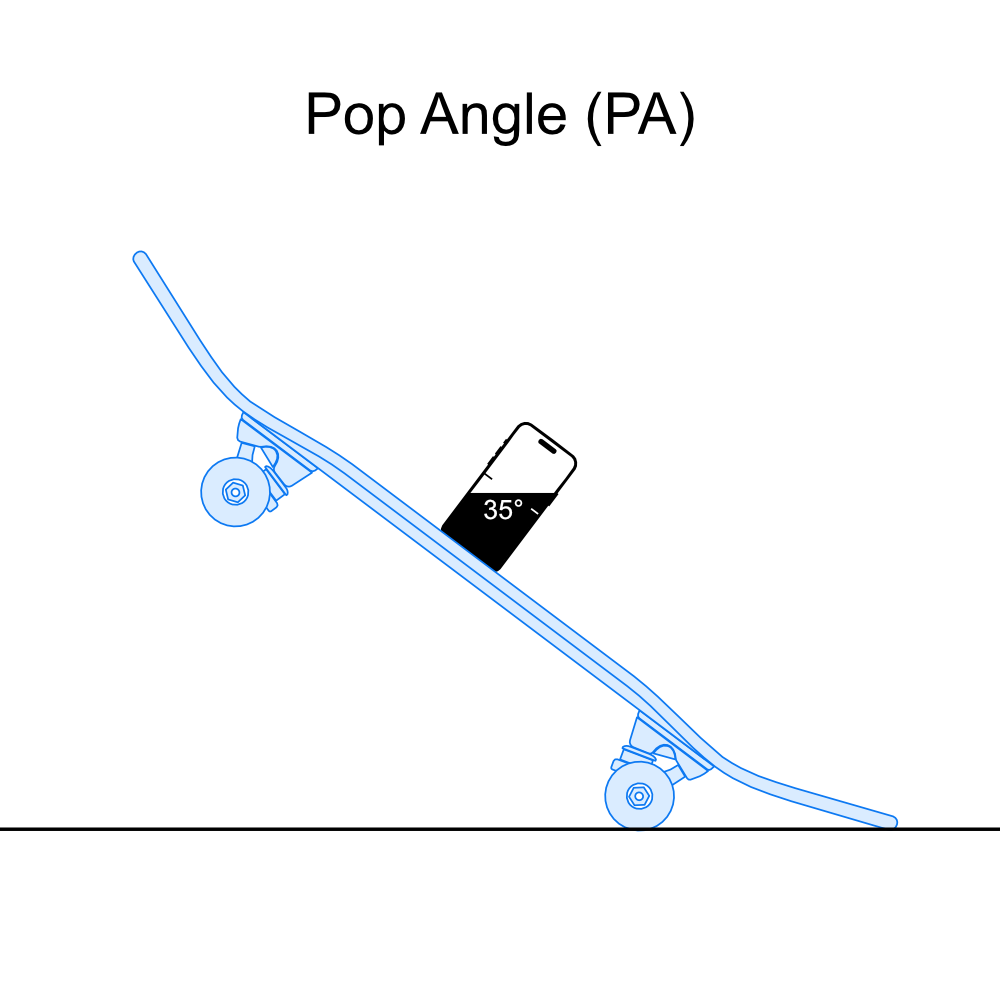
The right truck size
The decks width and trucks axle width should be about the same. Yet better no more than a 1/4″ differnce. Note that for example a skateboard with a 1/4″ narrow stance the axle is just 1/8″ narrower on each side.
Also the wheel shape influences the stance of your board.
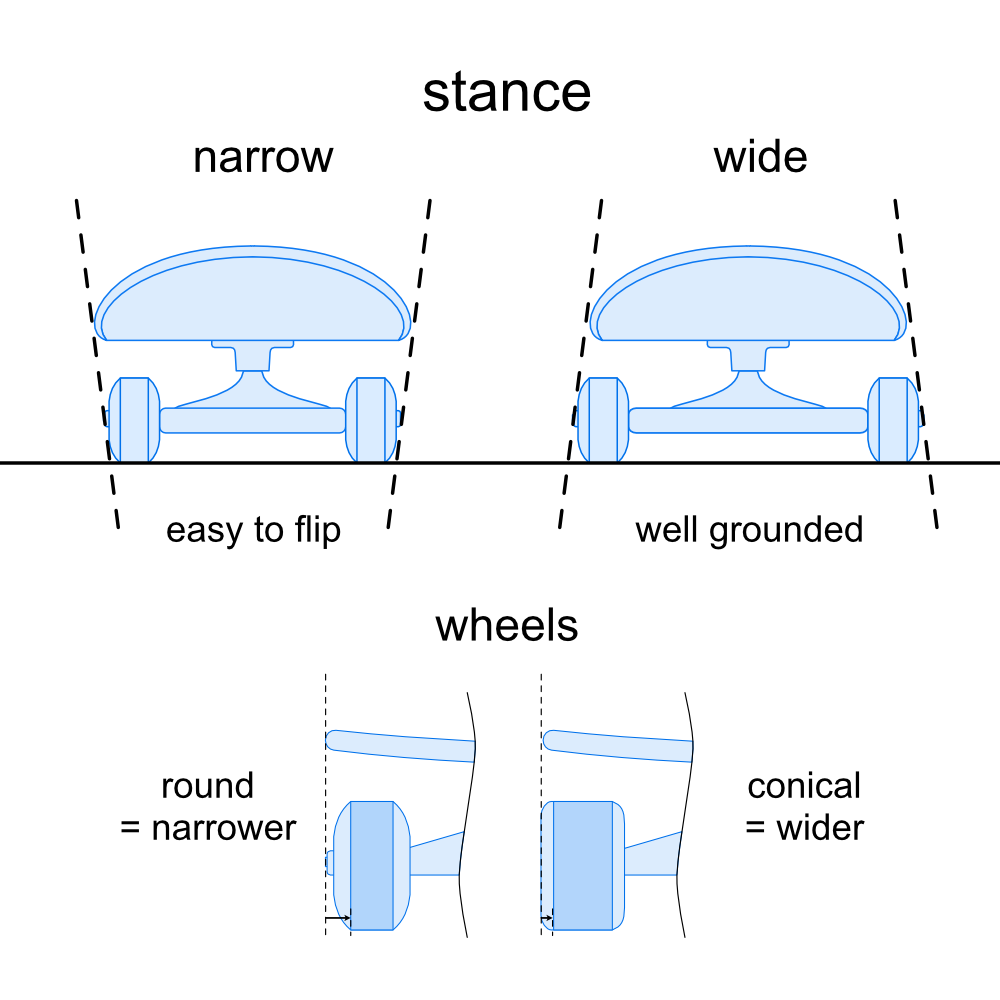
Trucks Pivot Angle
This is deep nerd stuff and it will be discussed here only in short. The Pivot Angle defines the character of the truck. It determines how much the hanger turns (how small the turning radius becomes) when you lean the deck.
For example ACE trucks have a big Pivot Angle. You need to lean the deck only a little bit and the hangers will already turn a lot. This makes the board very agile but it also reacts quite fast on slightest changes of your lean. Venture trucks feel different, cause they have a smaller Pivot Angle. The board is more forgiving and with the lean you can manipulate the board much finer. But you have to pay for it with less agility and faster wheelbites. The differences are very small in reality and is it all a just matter of being used to it. But now that you know about the Pivot Angle you can experiment with trucks characteristics to support your personal riding style.
The Pivot Angle is the ange between the deck and the line between pivot and the center of the bushings seat. The architecture of normal skateboard trucks is called Traditional King Pin. It has a rake so that the bushings sit behind the axle.
